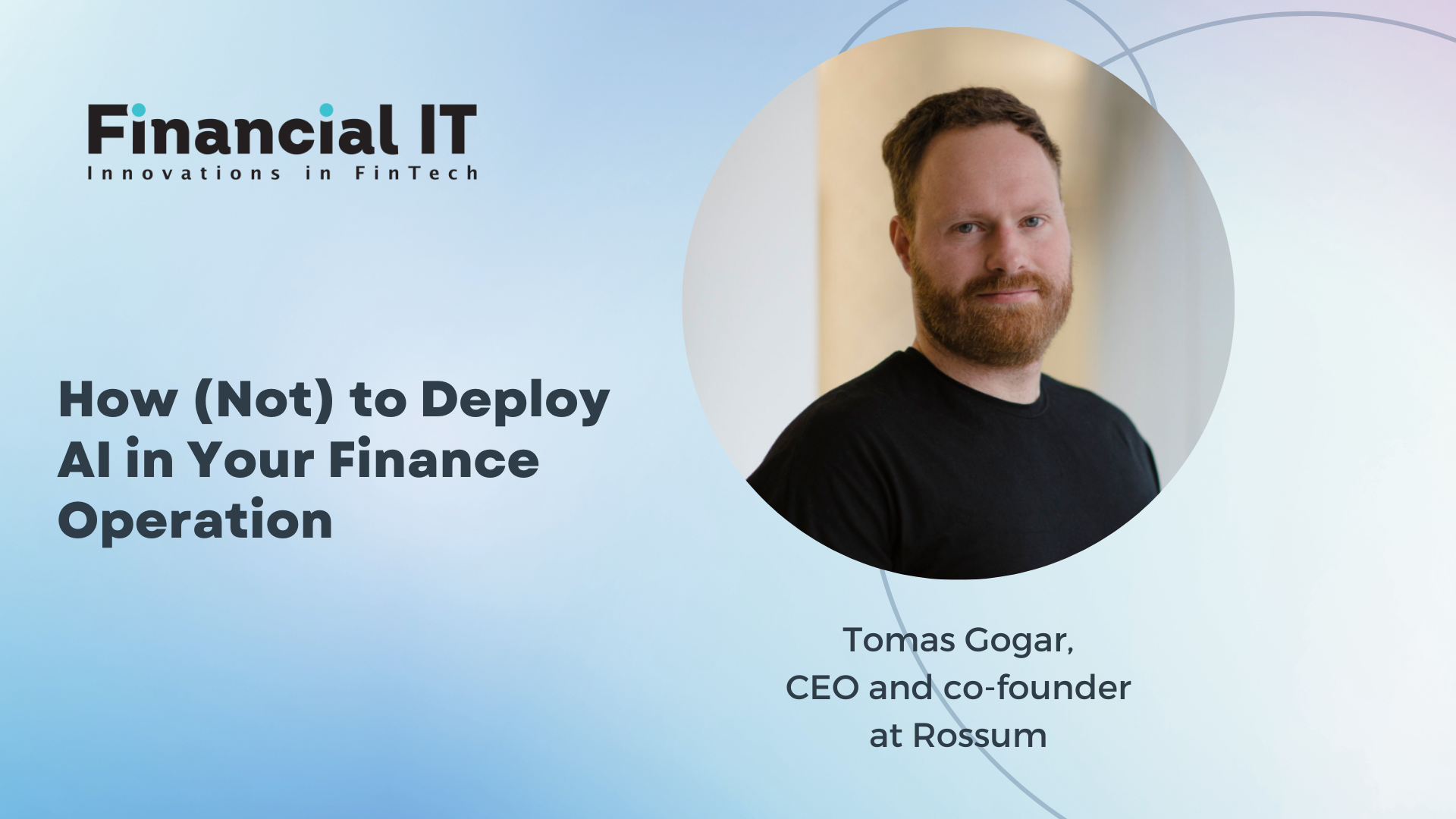How (Not) to Deploy AI in Your Finance Operation

- Tomas Gogar, CEO and co-founder at Rossum
- 13.03.2024 11:15 am #fintech #ai #aitools
The allure of AI is undeniable. From self-driving cars to composing music, it seems there's nothing AI can't do. This excitement can easily transfer to the finance world, where many decision-makers are tempted to jump on the AI bandwagon. Exercise a bit of caution before you sign up for the newest AI tool on the market. Just because AI is a powerful tool, it doesn't mean it's the answer to every financial headache. The fear of missing out and the fact that AI has suddenly become a hot topic are not a good reason to go all in on AI blindly.
The AI hype cycle and its pitfalls
Let's be honest, there's a lot of hype surrounding AI. The current generation of AI solutions can achieve some truly mind-blowing feats, like generating realistic images/videos or writing complex code. This ability to create impressive "prototype solutions" – solutions that work for a significant portion of cases – fuels the illusion that AI can solve all our problems with the same efficacy.
However, there's a crucial concept to consider here: the Law of the Instrument. Simply put, if your only tool is a hammer, everything starts to look like a nail. The same goes for AI – just because it can solve some problems brilliantly, it doesn't mean it's the right tool for your particular financial challenge.
Furthermore, every technological breakthrough follows a predictable hype cycle, like the one outlined by Gartner. Think back to the internet boom in the early 90s, the recent cryptocurrency craze, or even when Facebook spearheaded what is now called Web 2.0. Many jumped on that bandwagon without giving thought to the problem they were solving.
We might be nearing the peak of inflated expectations for AI, fueled by early success stories and media buzz. Companies add the initials ‘AI’ in front of products to make them marketable and sellable, and employees add it to their titles. But what follows this peak?
According to Gartner - a "trough of disillusionment" where inflated expectations collide with reality: Those ‘good enough’ half-baked AI solutions suddenly need to be finetuned to meet enterprise-level standards, and many of them will unfortunately (but predictably) fail to achieve that.
After the hype dust settles, the AI reality check
After all the media hype and consumer excitement, the market reality is set by those who would be willing to pay for that AI solution and whether it’s competent to deliver on its promise. Not 80%, not 90%, but 100% of the time.
Those impressive AI prototypes often require significant fine-tuning to become robust, enterprise-level products. Many times, this proves impossible with off-the-shelf AI models, especially as they would need deep domain knowledge and control over the AI itself.
Imagine the early days of the internet in the 90s when everyone wanted a piece of the world-wide-web hype. There were winners (think Google) and losers (Remember the dot-com bubble burst?).
The same is likely true for AI, except now the losers will be because of the enormous computing power costs and lack of challenge-fit solutions. There’s also a third category and that includes the new incumbents who will be able to leverage their position in the market (right place at the right time, doing the right thing).
The CFO's guide to smart AI adoption
So, how do we navigate this landscape and unlock real value for our finance teams? Here's my take:
Focus on problems, not solutions
Don't get caught up in the "AI hammer" mentality. Identify your financial challenges first. Then, explore if AI is the right tool for the job.Seek knowledgeable partners
Look for partners who understand your specific financial processes, the evolving AI landscape, and the current and future potential of the technology.Start small, scale smart
Begin with demonstrably solvable problems, not moonshot ideas. Focus on areas where current AI solutions can deliver tangible results.
Over the past seven years, we've worked with numerous financial institutions globally. The first question we always ask them is: why are they looking to automate processes, and what results do they expect? This approach ensures that we have a full understanding of their specific business needs. Before we demonstrate how our AI can solve their pain points and meet their goals.
Wrapping Up
AI is a powerful tool, but it's not a silver bullet. Understanding the hype cycle and prioritizing your problems can help you navigate the world of AI and avoid costly missteps — there’s no shame in waiting out the hype cycle to see precisely how it’ll turn out. But more important is conscious AI adoption, meaning driving your decision with data, expertise, and knowing who you’re dealing with. Remember, AI is a tool, not a goal. Use it thoughtfully to solve specific challenges and unlock real value in your finance team.



















